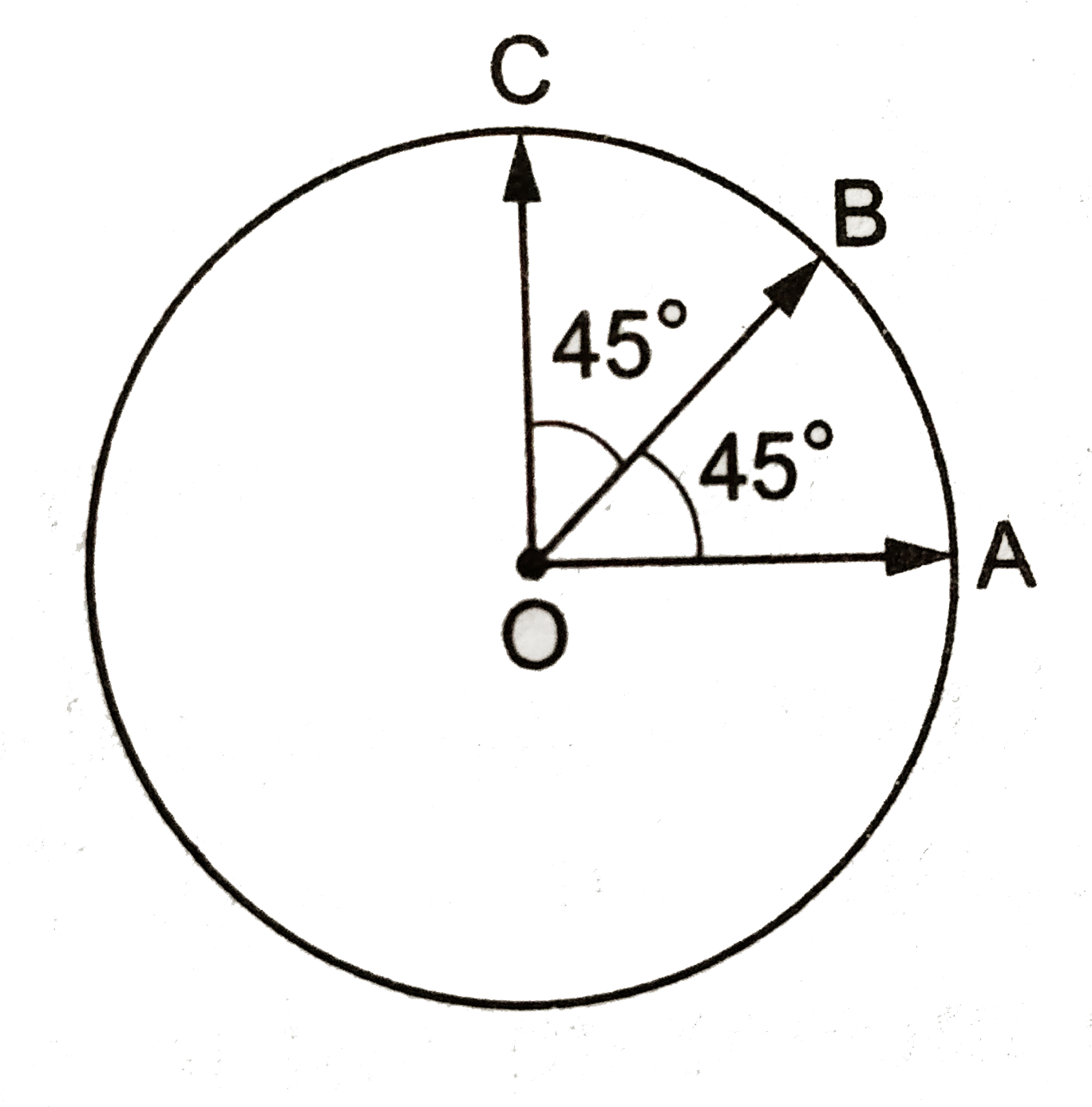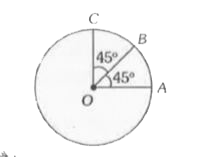Find the resultant of the vectors −−→OA,−−→OB,−−→OC as shown in figure. The radius of the circle is r. Solution in Telugu
→R=−−→OA+−−→AB+−−→OC
→R=rˆi+rcos45I+rsin45ˆj+rˆj
→R=(r+r√2)ˆj+(r+r√2)ˆj
∣∣→R∣∣=(√2r+τ) along −−→OB

Topper's Solved these Questions
- MOTION IN A PLANEBook:AAKASH SERIESChapter:MOTION IN A PLANEExercise:EXERCISE-A (Vectors & Scalars)
Explore 25 Videos
- MOTION IN A PLANEBook:AAKASH SERIESChapter:MOTION IN A PLANEExercise:EXERCISE-A (Addition & Subtractions of Vectors)
Explore 10 Videos
- MAGNETISMBook:AAKASH SERIESChapter:MAGNETISMExercise:PROBLEMS (LEVEL-II)
Explore 13 Videos
- MOTION IN A PLANEBook:AAKASH SERIESChapter:MOTION IN A PLANEExercise:QUESTION FOR DESCRIPTIVE ANSWER
Explore 7 Videos
Similar Questions
In Latin, the word vector means
View SolutionThe resultant of two forces cannot exceed
View SolutionThe force between the two poles is reduced to 'x' newtons when their separation is increased n times. It is increased by 'y' newtons when their separation is made 1/nth of their original value. What is the relation between x and y?
View SolutionA particle is projected over a triangle from one end of a horizontal base and garzing the vertex falls on the other end of the base . If α and β the base angles and θ the angle of projection then show that tanθ=tanα+tanβ.
View SolutionFind the resultant of the three vectors vec OA,vec OB and vec OC each of magnitude r as shown in figure?
View SolutionThe magnitude of vectors −−→OA,−−→OBand−−→OC in figure are equal. Find the direction of −−→OA+−−→OB−−−→OC.
 .
.
View SolutionFind the resultant of the three vectors −−→OA,−−→OB and −−→OC shown in figure. Radius of the circle is R.

View Solutionदिखाए गए वेक्टरो −−→OA,−−→OB तथा −−→OC के परिमाण बराबर है। वेक्टर −−→OA+−−→OB−−−→OC की दिशा बताएँ।

View Solutionतीन वेक्टर −−→OA,−−→OB तथा −−→OC दिखाए गए है। वृत्त कि त्रिज्या R है। तीनो वेक्टरो का परिणामी निकले।

View SolutionIf OAB is a tetrahedron with edges and ˆp,ˆq,ˆr are unit vectors along bisectors of
−−→OA,−−→OB:−−→OB,−−→OC:−−→OC,−−→OA respectively and ˆa=−−→OA∣∣∣−−→OA∣∣∣,→b=−−→OB∣∣∣−−→OB∣∣∣,→c=−−→OC∣∣∣−−→OC∣∣∣, then :
View SolutionIf OAB is a tetrahedron with edges and ˆp,ˆq,ˆr are unit vectors along bisectors of
−−→OA,−−→OB:−−→OB,−−→OC:−−→OC,−−→OA respectively and ˆa=−−→OA∣∣∣−−→OA∣∣∣,→b=−−→OB∣∣∣−−→OB∣∣∣,→c=−−→OC∣∣∣−−→OC∣∣∣, then :
View Solutionचित्र में दर्शाये अनुसार तीनो सदिशों −−→OA,−−→OB व −−→OC का परिणामी होगा। (वृत्त की त्रिज्या R है)

View SolutionFind the resultant of the vectors vec(OA), vec(OB), vec(OC) as shown in figure. The radius of the circle is r.
View SolutionThe magnitude of vectors −−→OA,−−→OBand−−→OC in figure are equal. Find the direction of −−→OA+−−→OB−−−→OC.
 .
.
View SolutionFind the resultant of the three vectors −−→OA,−−→OB and −−→OC shown in figure. Radius of the circle is R.

View Solution

